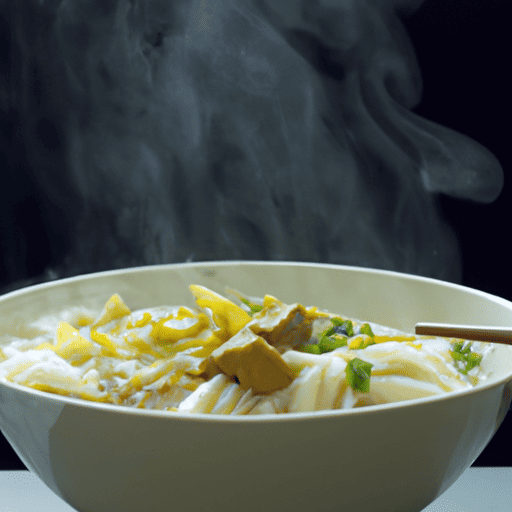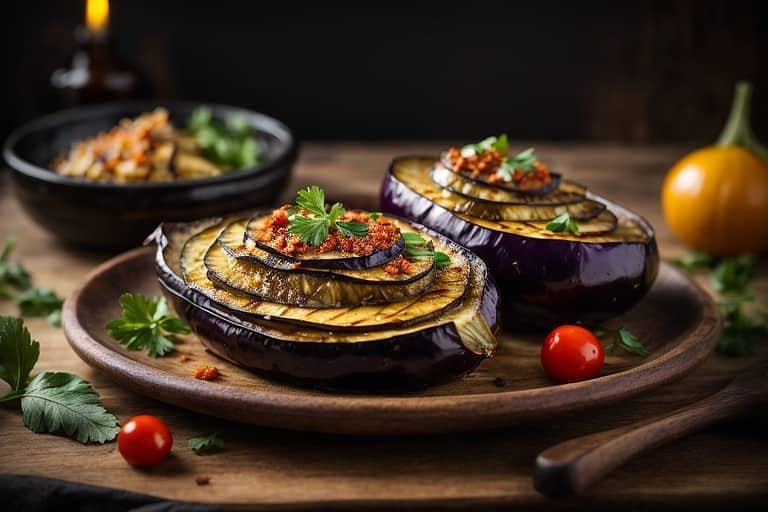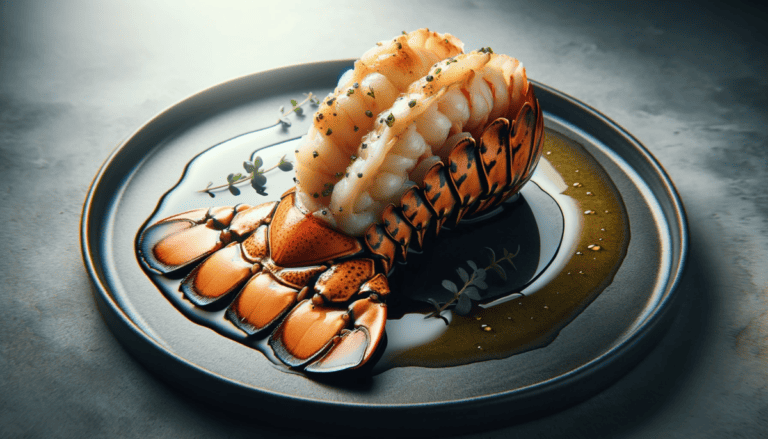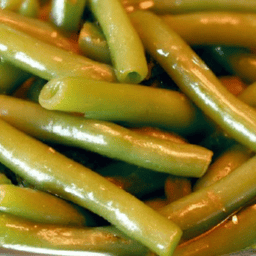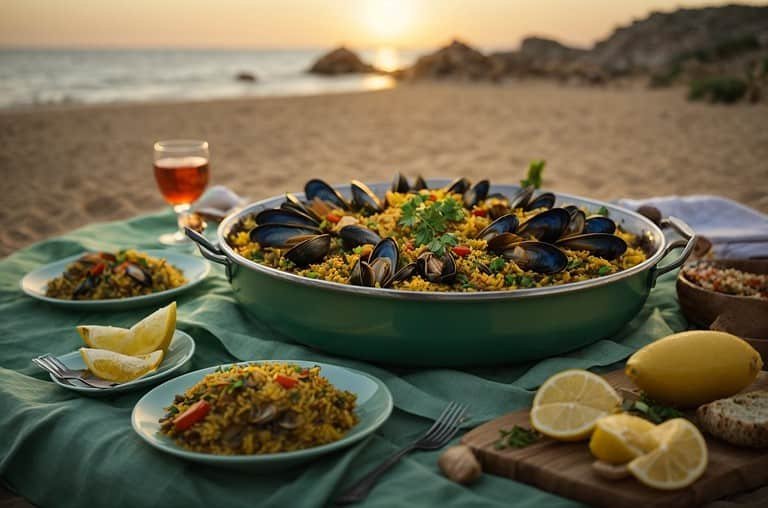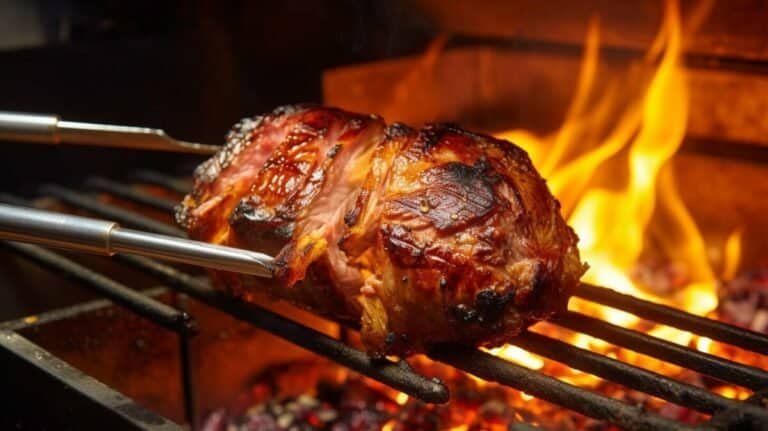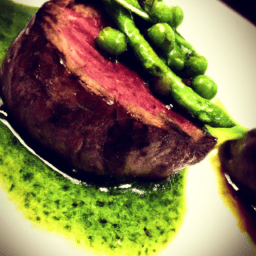How To Cook Vermicelli Rice Noodles
Have you ever wondered how to perfectly cook vermicelli rice noodles? Look no further! In this article, you will discover a simple yet effective method to prepare these delicious noodles. Whether you want to create a flavorful stir-fry, a comforting bowl of soup, or a refreshing salad, mastering the art of cooking vermicelli rice noodles is essential. With just a few easy steps, you’ll be able to achieve a beautiful texture and taste that will elevate any dish. So, let’s get started on this culinary adventure and unlock the secrets to cooking vermicelli rice noodles!
Understanding Vermicelli Rice Noodles
Definition of Vermicelli Rice Noodles
Vermicelli rice noodles are a type of rice noodle that are thin and transparent in appearance. They are typically made from rice flour, water, and sometimes tapioca or cornstarch. Due to their slender shape, they are often referred to as “rice sticks” or “rice vermicelli.” Vermicelli rice noodles are a staple in many Asian cuisines and are known for their versatility and ability to absorb flavors from various ingredients.
The Origin of Vermicelli Rice Noodles
Vermicelli rice noodles have a long history that dates back centuries. It is believed that they originated in China during the Tang Dynasty and later spread to other parts of Asia. They gained popularity in countries such as Vietnam, Thailand, and Malaysia, where they became a prominent ingredient in their respective cuisines. Over time, vermicelli rice noodles have become a beloved staple in many households around the world, appreciated for their taste and ability to complement a wide range of dishes.
Uses of Vermicelli Rice Noodles in Different Cuisines
Vermicelli rice noodles are widely used in various cuisines across Asia and beyond. In Vietnamese cuisine, they are a key ingredient in their famous dish called “bun cha,” where they are served alongside grilled pork, fresh herbs, and a tangy dipping sauce. In Thai cuisine, vermicelli rice noodles are often used in stir-fries, soups, and spring rolls. Malaysian cuisine incorporates vermicelli rice noodles in dishes like mee siam, which is a spicy and tangy noodle dish. Their versatility allows for endless possibilities in both savory and sweet dishes, including salads, curries, and even desserts.
Ingredients Necessary for Cooking Vermicelli
The Role of Vermicelli Rice Noodles
Vermicelli rice noodles serve as the main component in countless dishes, providing a satisfying and versatile base. They have a neutral flavor, which allows them to absorb the flavors of other ingredients they are cooked with. Their delicate texture adds a pleasant mouthfeel to dishes, and their ability to effortlessly soak up sauces and broths makes them an excellent choice for soups and stir-fries.
Additional Ingredients for Flavor
To enhance the taste of vermicelli rice noodles, various ingredients can be added during the cooking process. Common additions include soy sauce, fish sauce, garlic, ginger, chili peppers, lime juice, and herbs like cilantro and basil. These ingredients contribute to the overall flavor profile of the dish and help create a harmonious balance of tastes.
Variations of Ingredients Based on Recipe
The specific ingredients used when cooking vermicelli rice noodles can vary depending on the recipe and the desired outcome. For savory dishes, vegetables such as bell peppers, carrots, snow peas, and bean sprouts are commonly included. Protein options may include shrimp, chicken, beef, or tofu. In desserts, vermicelli rice noodles can be paired with coconut milk, palm sugar, and fresh fruits. The versatility of vermicelli rice noodles allows for a wide range of ingredients to be incorporated, making it a flexible ingredient in various culinary creations.
Preparation Before Cooking
Choosing Quality Vermicelli Noodles
When selecting vermicelli rice noodles, it is important to choose a high-quality brand to ensure optimal texture and taste. Look for noodles that are clear, smooth, and free from any discoloration or clumps. It is also helpful to read reviews or seek recommendations from trusted sources to find a reputable brand.
Correct Measurement of Ingredients
Accurate measurement of ingredients is crucial to achieve the desired consistency and balance of flavors. Follow the recipe guidelines to ensure you are using the correct amount of vermicelli rice noodles, as well as any additional ingredients required. Measuring cups or kitchen scales can be used to ensure precise measurements.
Preparation of Additional Ingredients Based on Recipe
Before starting the cooking process, it is essential to prepare all additional ingredients as per the recipe instructions. This may include slicing vegetables, marinating protein, or soaking dried mushrooms. Proper preparation ensures a smooth and efficient cooking process, allowing all the components to come together seamlessly.
Start by Soaking the Vermicelli
Importance of Soaking
Soaking vermicelli rice noodles before cooking is crucial to achieve the desired texture and prevent them from becoming too sticky or mushy. Soaking softens the noodles, making them easier to cook and ensuring that they absorb flavors more effectively.
How to Properly Soak Vermicelli
To properly soak vermicelli rice noodles, follow these steps:
- Fill a large container or bowl with room temperature water.
- Submerge the vermicelli noodles in the water, ensuring they are fully covered.
- Gently stir the noodles to separate them and prevent clumping.
- Let the noodles soak for the recommended time, usually indicated on the packaging or recipe instructions.
- Test the noodles for doneness by tasting a small strand. They should be soft but still slightly firm.
- Once properly soaked, drain the noodles and rinse them with cold water to remove excess starch and prevent further cooking.
Soaking Time Necessary for Vermicelli
The soaking time required for vermicelli rice noodles can vary depending on their thickness and brand. As a general guideline, thinner noodles may require 5-10 minutes of soaking, while thicker noodles may need 10-15 minutes or more. It is recommended to follow the instructions provided on the packaging or specific recipe for the most accurate soaking time.
How to Cook the Vermicelli by Boiling
Starting the Boiling Process
To cook vermicelli rice noodles by boiling, follow these steps:
- Fill a large pot with water and bring it to a rolling boil.
- Add a pinch of salt to the boiling water to enhance the flavor of the noodles.
- Carefully add the soaked vermicelli rice noodles to the boiling water, stirring gently to separate any clumps.
- Reduce the heat to medium and let the noodles cook for the recommended time, stirring occasionally to prevent sticking.
- Test the noodles for doneness by tasting a strand. They should be tender but still have a slight bite to them.
- Once cooked, immediately drain the noodles and rinse them with cold water to stop the cooking process and remove excess starch.
Duration of Boiling for Optimal Texture
The exact cooking time needed to achieve the optimal texture of vermicelli rice noodles can vary. Thinner noodles typically cook faster, around 3-5 minutes, while thicker noodles may take 5-7 minutes. It is important to monitor the noodles closely and avoid overcooking, as they can quickly turn mushy. Remember that the noodles will continue to soften slightly when incorporated into a dish, so it is best to slightly undercook them during boiling.
Draining and Rinsing the Vermicelli Rice Noodles
Once the vermicelli rice noodles are cooked to the desired texture, they should be immediately drained and rinsed with cold water. This will halt the cooking process and prevent the noodles from sticking together. The cold water rinse also helps remove any excess starch, resulting in noodles that are light, fluffy, and easier to work with when adding them to other ingredients or sauces.
Frying the Vermicelli Rice Noodles
Preparation for Frying
When frying vermicelli rice noodles, it is crucial to have all the ingredients ready and organized before starting the cooking process. This includes prepping vegetables, meat, and sauces that will be used. Vermicelli rice noodles should be soaked and drained beforehand, as this ensures they are pliable and ready for frying.
Frying Techniques and Safety Measures
To fry vermicelli rice noodles, follow these steps:
- Heat a generous amount of oil in a large frying pan or wok over medium-high heat.
- Carefully add the drained vermicelli rice noodles to the hot oil, spreading them out evenly in the pan.
- Allow the noodles to cook undisturbed for a couple of minutes until the bottom side becomes golden brown and crispy.
- Using a spatula or tongs, gently flip the noodles to fry the other side. Be cautious as the noodles may be fragile and prone to breaking.
- Continue to fry the noodles for a few more minutes until both sides are crispy and golden brown.
- Once cooked, remove the noodles from the pan and place them on a plate lined with paper towels to absorb any excess oil.
It is important to exercise caution when frying vermicelli rice noodles, as hot oil can cause burns. Use a heat-proof utensil to handle the noodles and be mindful of any oil splatters. Additionally, ensure your kitchen is well-ventilated to prevent the buildup of smoke and odors.
Achieving the Perfect Crispness
To achieve the perfect crispness when frying vermicelli rice noodles, a combination of factors is important. Firstly, ensure that the oil is heated to the correct temperature before adding the noodles. Too low of a temperature can result in oily and soggy noodles, while too high of a temperature can cause them to burn quickly. Secondly, evenly spread out the noodles in the pan to allow them to fry evenly and avoid clumping together. Finally, accurately timing the frying process is crucial. The noodles should be cooked until they are crispy and golden brown but still retain a touch of chewiness.
Sauté The Vermicelli Rice Noodles
Preparation for Sautéing
Before sautéing vermicelli rice noodles, it is important to have all the necessary ingredients prepared and readily accessible. This includes chopped vegetables, protein, sauces, and herbs that will be used. Vermicelli rice noodles should be soaked, drained, and separated beforehand to ensure they are ready for sautéing.
Sautéing Techniques
To sauté vermicelli rice noodles, follow these steps:
- Heat a tablespoon of oil in a large pan or wok over medium-high heat.
- Add any desired aromatics such as minced garlic, ginger, or shallots, and sauté until fragrant and lightly golden.
- Add the soaked and drained vermicelli rice noodles to the pan, tossing them gently to coat them with the oil and aromatics.
- Add the prepped vegetables and protein to the pan and continue to sauté for a few minutes until they are cooked to the desired level of tenderness.
- Incorporate any sauces or seasonings according to the recipe, stirring well to evenly distribute the flavors.
- Continue to sauté the vermicelli rice noodles and other ingredients for a couple of minutes until everything is well combined, heated through, and the noodles have absorbed the flavors.
Sautéing vermicelli rice noodles allows them to develop a delicate char and a slightly smoky flavor. The high heat used in sautéing creates a contrast between the tender noodles and the crispier edges, resulting in a satisfying and flavorful dish.
Balancing The Flavor While Sautéing
When sautéing vermicelli rice noodles, it is essential to pay attention to the balance of flavors. Taste the dish as you go and adjust the seasonings as needed. Add more soy sauce for saltiness, lime juice for acidity, or chili flakes for heat, depending on personal preference. The goal is to create a harmonious combination of flavors that complements the vermicelli rice noodles and other ingredients in the dish.
Key Tips for Working with Vermicelli Noodles
Avoiding Soggy or Too Chewy Noodles
To prevent vermicelli rice noodles from becoming soggy or too chewy, it is important to follow the soaking and cooking instructions carefully. Do not overcook the noodles during boiling or frying, as they can quickly lose their desired texture. It is also crucial to promptly drain and rinse the noodles with cold water after cooking to stop the cooking process and remove excess starch.
The Best Ways to Store Vermicelli
To store uncooked vermicelli rice noodles, keep them in a cool, dry place in an airtight container. It is important to protect the noodles from humidity, as excessive moisture can cause them to clump together or become stale. Cooked vermicelli rice noodles can be stored in the refrigerator for up to three days in a sealed container. It is recommended to separate the noodles with a bit of oil or plastic wrap to prevent them from sticking together.
Common Mistakes While Cooking Vermicelli
Some common mistakes to avoid when cooking vermicelli rice noodles include:
- Overcooking: Pay attention to the cooking time and avoid overcooking the noodles, as they can become mushy and lose their desired texture.
- Insufficient soaking: Take the time to properly soak the noodles before cooking to ensure they are pliable and evenly cooked.
- Not rinsing after cooking: Failing to rinse the noodles with cold water can result in stickiness and clumping, especially if they are not immediately added to other ingredients or sauces.
Incorporating Vermicelli in Different Dishes
Vermicelli in Soups
Vermicelli rice noodles are commonly used in various soups, adding a satisfying texture and absorbing the flavors of the broth. In Vietnamese cuisine, they are a staple in pho, a popular noodle soup typically made with beef or chicken broth. Vermicelli rice noodles are also frequently featured in Thai cuisine’s tom yum soup, a spicy and sour delight. Additionally, vermicelli rice noodles can be used in Chinese noodle soups, providing a lighter alternative to thicker wheat noodles.
Vermicelli in Stir-Fry
Vermicelli rice noodles are well-suited for stir-fries due to their ability to absorb flavors and their quick cooking time. They work wonderfully alongside an array of vegetables, meats, or tofu. A classic stir-fry dish that features vermicelli rice noodles is the Thai-inspired pad thai, a flavorful combination of noodles, shrimp, eggs, bean sprouts, and peanuts. Vermicelli rice noodles can also be used in Chinese-style stir-fries like chow mein or Singapore noodles, which offer a delightful mix of flavors and textures.
Desserts Made with Vermicelli
Vermicelli rice noodles are not limited to savory dishes; they can also be used to create delectable desserts. In many Asian cuisines, vermicelli rice noodles are transformed into sweet treats by simmering them in sweetened coconut milk or syrup. This results in a delightful dessert known as “bubur cha cha” in Malaysia, where the noodles are accompanied by colorful yam, sweet potatoes, and other assorted toppings. In Thai cuisine, vermicelli rice noodles are commonly used in a dessert called “khanom tua paep,” where they are served with sweet syrup and crushed ice.
Nutritional Values and Benefits of Vermicelli Rice Noodles
Nutritional Content of Vermicelli
Vermicelli rice noodles are relatively low in calories and fat. A 2-ounce (56g) serving of vermicelli rice noodles contains around 185 calories, 0.65g of fat, and 43g of carbohydrates. They are also a good source of folate, providing approximately 14% of the recommended daily intake. Additionally, vermicelli rice noodles offer small amounts of iron, calcium, and vitamin B3.
Health Benefits of Vermicelli
Vermicelli rice noodles can be a healthier alternative to wheat-based noodles for individuals who are gluten-intolerant or following a gluten-free diet. They are naturally gluten-free and can provide a satisfying and nutritious option for those with dietary restrictions. Vermicelli rice noodles are also generally low in sodium and cholesterol, making them suitable for individuals who are watching their intake of these nutrients.
Suitability of Vermicelli in Different Diets
Vermicelli rice noodles can be incorporated into various diets due to their versatility and adaptability. They can be part of a vegetarian or vegan diet when paired with plant-based protein sources like tofu or tempeh. For individuals following a paleo or keto diet, vermicelli rice noodles may be consumed in moderation due to their carbohydrate content. However, it is important to consider portion sizes and overall macronutrient balance when incorporating vermicelli rice noodles into specific dietary plans.
In conclusion, vermicelli rice noodles are a versatile and delicious ingredient that can elevate a range of dishes. Whether boiled, fried, or sautéed, these delicate noodles provide a delightful texture and absorb the flavors of other ingredients. From savory stir-fries to comforting soups and even sweet desserts, vermicelli rice noodles are a staple in many cuisines around the world. So next time you’re looking to try something new in your kitchen, grab a pack of vermicelli rice noodles and embark on a culinary adventure!

